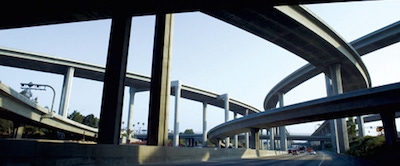Dow dips into infrastructure with new polyurethane products
April 1, 2016

Spring’s arrival reveals the ravages of winter: Pockmarked roads, creaking bridges and leaking water pipes. The holes and cracks are worsening. Every four years, the American Society of Civil Engineers (ASCE) grades the country’s infrastructure on an A through F scale. Continuing a trend of declining marks, America’s overall infrastructure earned only a D+ in the group’s most recent report card from 2013.
 Dow Chemical (Midland, MI) has long supplied polyurethane used in furniture, appliances, insulation and carpeting. The company now says the polymer could also have a role in bringing the country’s D+ infrastructure into repair. After decades of supplying polyurethane for a range of commercial uses, Dow is now offering polyurethane for infrastructure applications.
Dow Chemical (Midland, MI) has long supplied polyurethane used in furniture, appliances, insulation and carpeting. The company now says the polymer could also have a role in bringing the country’s D+ infrastructure into repair. After decades of supplying polyurethane for a range of commercial uses, Dow is now offering polyurethane for infrastructure applications.
Dow is no stranger to construction, having long supplied products such as coatings and sealants. But Juan Carlos Medina, Dow’s Marketing Manager for polyurethane industrial applications, says the company sees an opportunity in polymer concrete, which uses a resin as the binder in place of cement. Medina acknowledges that other companies supply polymers for concrete but he says that Dow’s polyurethane is supported by three years of research and development, which yielded a polymer concrete close to conventional concrete in strength and superior in other measures.
Medina says Dow’s polymer concrete cures much faster, allowing roads and bridges to return to service sooner. He adds that Dow’s polyurethane offers more “give,” allowing concrete to expand and contract in changing temperatures rather than cracking like conventional concrete. Polyurethane can also be used to coat water pipes, an application that requires only a thin layer. “The amount of material is not going to be that large, but it’s going to be super important because it’s going to prevent water leakage,” Medina says.
Sealing pipes is cheaper than replacing them, Medina says. Cost is no small consideration for cash-strapped cities and towns. Delayed maintenance and underinvestment mean that the country faces hefty repair bills. At the current rate, ASCE says, U.S. infrastructure will require $3.6 trillion in investments by 2020.
For an overview of the state of our infrastructure, check out the infographic provided by Dow Polyurethanes. Just click here or on the image below to get the full picture.

About the Author(s)
You May Also Like


